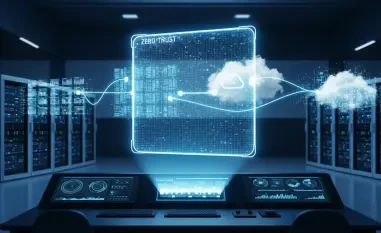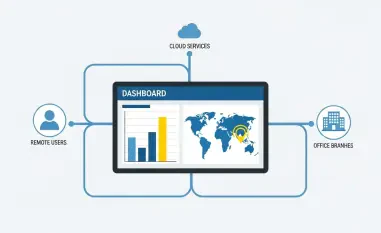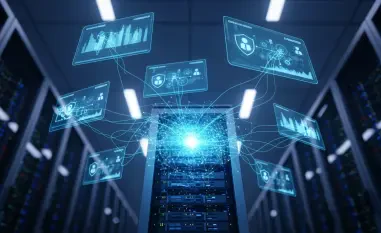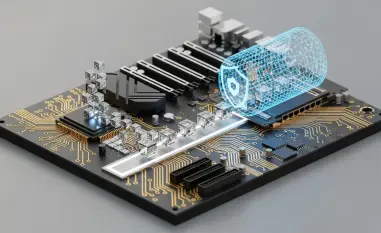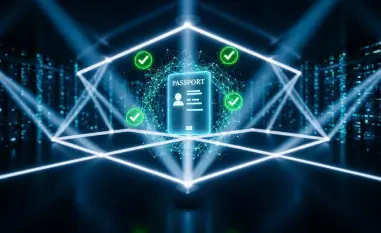In the ever-evolving landscape of cybersecurity, constructing a defensible security architecture is paramount. This article delves into the necessity of adopting zero trust principles and beyond to create a resilient and adaptive security framework. We explore the core themes and key insights essential for security professionals to stay ahead of sophisticated cyber threats.
Evolving Threat Landscape
Shifting Attack Vectors
Cyber threats are constantly evolving, with attackers seeking the path of least resistance. As endpoint protection has advanced, attackers have shifted their focus to less obvious areas such as network devices, supply chains, firmware, and public-facing systems. This shift necessitates a broader approach to security, moving beyond endpoint protection to encompass the entire attack surface. Over recent years, advancements in AI-driven threat detection and contextual-aware defenses on endpoints have made them harder targets, pushing attackers to find new, easier targets. Industries are now witnessing a surge in attacks on network infrastructure and ancillary systems that were once deemed secondary.
This transformation underscores the importance of expanding security measures beyond just endpoints, touching upon every potential entry point. As organizations integrate more technology and interconnectivity among systems, ensuring the security of less obvious areas becomes critical. Public-facing systems represent an attractive target due to their accessibility, potentially leading to devastating breaches if left unchecked. Moreover, poorly secured firmware and supply chain vulnerabilities can provide attackers with the discreet entry points they seek. Addressing this evolving threat landscape calls for a dynamic and multi-faceted defense strategy that recognizes the broadening scope of potential vulnerabilities.
Current Trends in Cyber Threats
The 2024 Verizon Data Breach Investigations Report (DBIR) highlights significant trends in cyber threats. Phishing remains the dominant initial access vector, accounting for 36% of breaches. However, vulnerability exploitation (21%) and stolen credentials (20%) are also rising threats. The increase in exploiting vulnerabilities for remote code execution and unauthorized access is particularly concerning, as it opens new pathways for intrusions like ransomware attacks and lateral network movements. Phishing’s dominance speaks to the perennial human factor in cybersecurity, where ingenuity in social engineering continues to fool even the most cautious users.
Beyond phishing, the growing threat of vulnerability exploitation demands greater vigilance. Attackers are increasingly leveraging known vulnerabilities to deploy malware, disrupt operations, or gain a foothold within a network. This rise in exploiting vulnerabilities aligns with trends showing an alarming increase in ransomware attacks, where remote code execution can grant attackers devastating control over targeted systems. Stolen credentials facilitate unauthorized access, further aggravating the intrusion landscape by making it easier for attackers to impersonate legitimate users, evade detection, and move laterally within networks. Organizations must therefore prioritize the timely patching of vulnerabilities and robust credential management to guard against these pervasive threats.
Defensible Security Architecture
Holistic Security Posture
To build a robust security posture, defenders must transcend individual system and endpoint protection. A holistic view of the attack surface is essential, creating defensive chains that mirror attackers’ methodologies but are designed to thwart, detect, and respond to intrusions at every stage. This approach ensures a comprehensive defense strategy that addresses all potential attack vectors. By examining the attack surface from an encompassing perspective, defenders can anticipate and mitigate threats more effectively, leveraging a more unified security platform rather than isolated systems.
Creating a holistic security posture involves understanding the interconnections and dependencies within an organization’s IT ecosystem. A single compromised component can potentially jeopardize the entire network, making it imperative to identify and fortify every element. Defensive chains emulate the intrusions’ lifecycle, focusing on key activities such as reconnaissance, infiltration, and exfiltration. This alignment enables defenders to deploy layered defenses that detect attempts at various stages, offering opportunities to intercept and neutralize threats early. Accurately mapping the entire attack surface, maintaining visibility, and instituting thorough monitoring form the bedrock of an integrated security strategy.
Defensive Chains and Layered Defense
The concept of defensive chains is an evolved form of the traditional defense-in-depth philosophy. Visibility in Depth plays a critical role in achieving real-time awareness across the environment, including endpoints, network traffic, and cloud workloads. Real-time visibility ensures that defenders can see, interpret, and act upon anomalous or potentially harmful activities as they occur. This continuous monitoring extends to data flows and access controls, providing valuable insights into normal versus suspicious behaviors across the system’s landscape.
Detection in Depth leverages advanced threat detection technologies such as AI and machine learning to recognize subtle anomalies indicative of security breaches. These technologies excel at identifying patterns and deviations that traditional methods might miss, enabling more proactive and precise threat detection. By incorporating machine learning, security systems can continually adapt to evolving threats, improving detection accuracy over time. Response in Depth focuses on developing comprehensive incident response plans that enable agile and adaptive reactions to security incidents. These plans must detail actions for swift containment, mitigation, and recovery, ensuring minimal disruption and expedited return to normal operations. A well-organized incident response team can significantly mitigate the impact of attacks, preserving operational continuity and data integrity.
Zero Trust Principles
Zero Trust Network Access (ZTNA)
Zero trust serves as a foundation for defensible security architecture, fundamentally changing how access control is implemented. The philosophy of zero trust eliminates implicit trust, enforcing relentless verification regardless of request origins. This paradigm shift is vital as it ensures that every interaction within the network, whether internal or external, is verified. Zero Trust Network Access (ZTNA) supersedes traditional VPNs by providing secure, identity-focused access to applications and resources. Unlike VPNs, which create broad and often unsecured access tunnels, ZTNA precisely defines and enforces access policies based on user identity, thus minimizing lateral movement risks within the network.
ZTNA offers several advantages over conventional methods, emphasizing segmentation and least privilege access. By continually validating each access request, organizations can prevent unauthorized access even if credentials are compromised. This approach also simplifies the management of access policies, adapting in real-time to changing user contexts and threat landscapes. Moreover, ZTNA supports scalable and dynamic security implementations suitable for modern, hybrid environments where users and resources are distributed across various locations and devices. Integrating ZTNA into broader security frameworks enhances overall organizational resilience and adaptability.
Device Hardening
Continuous hardening of devices is essential for mitigating exploitation risks posed by poorly configured or outdated devices. Regularly reviewing configurations, applying patches, and enforcing stringent access controls are critical steps in maintaining device security. This proactive approach ensures that devices remain resilient against emerging threats. Device hardening involves fortifying endpoint security by implementing best practices such as disabling unnecessary services, enforcing strong authentication mechanisms, and routinely updating software and firmware.
Regular configuration reviews help identify and rectify potential vulnerabilities before they can be exploited. Keeping systems updated with the latest patches is imperative, as vendors frequently release updates that address security flaws found post-deployment. Enforcing stringent access controls ensures that only authorized personnel can configure, access, or operate crucial systems, minimizing the risk of unauthorized changes that could weaken security. This layered approach to device hardening is integral to maintaining a robust security posture, given the increasing sophistication of cyber threats targeting endpoint vulnerabilities.
Product Awareness
Gaining in-depth knowledge of the software bill of materials (SBOM) for every critical product in the network is crucial. Understanding the components within these products helps preempt vulnerabilities and backdoors that could be exploited by cybercriminals. This awareness enables organizations to take proactive measures to secure their software supply chain. An SBOM provides a detailed inventory of all components, including open-source libraries, third-party modules, and bespoke elements, facilitating a thorough risk assessment of each constituent part.
Being aware of the SBOM allows organizations to track and manage dependencies, promptly addressing any identified vulnerabilities within those components. This is particularly important in a landscape where supply chain attacks are becoming increasingly prevalent. Proactive measures might include regular vulnerability scanning, prompt application of security patches, and rigorous vetting of third-party vendors. Adequate product awareness also involves maintaining an updated list of all critical products and continuously monitoring them for emerging threats. By adopting a meticulous approach to product awareness, organizations can significantly fortify their defenses against potential software supply chain attacks.
Advanced Detection and Response
Enhanced Threat Detection
A defensible security architecture mandates enhanced threat detection capabilities. Utilizing advanced technologies such as AI and machine learning allows for the identification of subtle anomalies that may indicate potential security breaches. This proactive approach ensures that threats are detected early, enabling swift and effective responses. Enhanced threat detection involves deploying sophisticated tools that can parse vast amounts of data, identifying patterns and deviations that signify malicious activities.
Real-time analytics and correlation engines form core components of these advanced detection systems, shifting the focus from reactive to proactive threat management. Machine learning algorithms continually refine detection parameters based on evolving threat intelligence, enhancing their accuracy and reducing false positives over time. Integrating these technologies into a broader detection framework enables seamless monitoring of all network activities, providing a comprehensive view of potential threats. This continuous vigilance is essential for staying ahead of increasingly sophisticated cyber adversaries who constantly develop new tactics to evade traditional defenses.
Rapid Incident Response
Developing comprehensive incident response plans is essential for ensuring agile and adaptive reactions during security incidents. These plans should facilitate swift containment and recovery, minimizing damage and restoring normal operations. A well-prepared incident response strategy is a critical component of a robust security framework. Rapid incident response involves detailed planning and coordination, covering all phases from detection through to resolution.
An effective incident response plan includes predefined protocols for identifying, analyzing, containing, and recovering from security incidents. It must delineate clear roles and responsibilities, ensuring every team member knows their tasks during an incident. Regular drills and simulations help refine these plans, ironing out any operational inefficiencies and ensuring they remain up-to-date with the latest threat intelligence. This preemptive readiness enables organizations to act swiftly and effectively, reducing the overall impact of security breaches. Furthermore, maintaining open lines of communication among stakeholders during incidents is crucial to ensuring a unified and coordinated response.
Educational and Certification Imperatives
Specialized Training
The importance of specialized training and certifications cannot be overstated. Courses like the SANS Security 530 and certifications such as the GDSA equip security professionals with the knowledge and skills essential for implementing cutting-edge defensive strategies. Continuous education ensures that professionals stay updated with the latest advancements in cybersecurity. Specialized training programs provide in-depth knowledge of emerging threats, advanced defensive techniques, and evolving regulatory landscapes.
These certifications validate a practitioner’s expertise, demonstrating their capability to design, implement, and manage robust security architectures. Keeping pace with the rapidly changing security environment requires an ongoing commitment to learning and professional development. This dedication not only enhances individual capabilities but significantly contributes to the organization’s overall security posture. Staying abreast of current trends and best practices through reputable training programs ensures that security professionals are well-prepared to address and mitigate contemporary cyber threats effectively.
Staying Ahead of Emerging Threats
In the constantly shifting world of cybersecurity, building a robust security architecture has become more crucial than ever. This key article highlights the importance of implementing zero trust principles to establish a security framework that is both resilient and adaptable. A zero trust approach assumes that threats could be both external and internal, prompting organizations to verify every attempt to access their systems rigorously.
Beyond zero trust, the article touches on additional strategies needed to create a comprehensive defense mechanism against increasingly sophisticated cyber threats. It emphasizes continuous monitoring, the integration of advanced technologies such as machine learning and artificial intelligence, and fostering a proactive security culture within organizations.
For security professionals, these insights are indispensable. The threat landscape is continuously evolving, with cyber criminals becoming more skilled and persistent. Hence, staying ahead requires a deep understanding of current and emerging threats, alongside innovative security measures that go beyond traditional perimeter defenses.
This article serves as a guide for security experts seeking to fortify their defenses, offering critical themes and strategies that address the modern challenges of cybersecurity. Embracing these principles will not only safeguard sensitive information but also ensure the stability and trustworthiness of the digital infrastructures we rely on daily.



